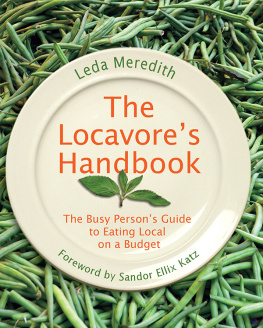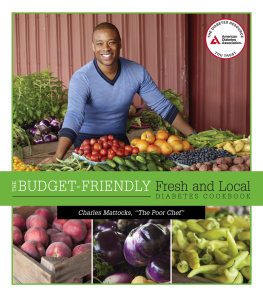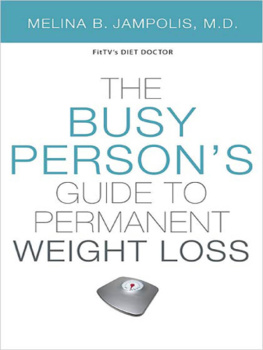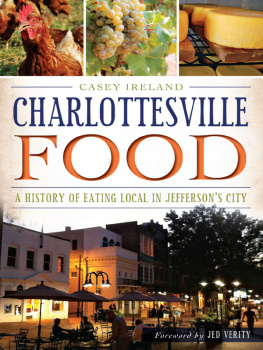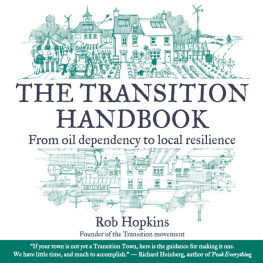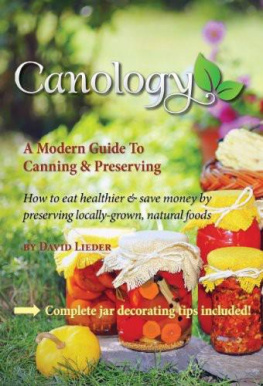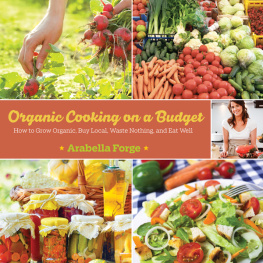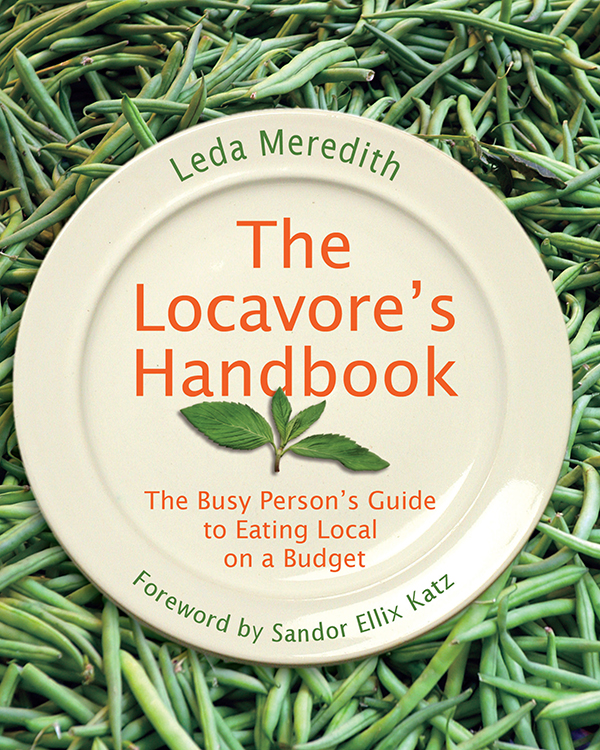The Locavores Handbook
T h e B u sy P e r so ns Gu i de
to Eat in g Lo c al o n a B u d g et
L ed a M e r e di t h
To my grandmother, Eugenia Kilgore,
close to a century old and still curious about the world.
Copyright 2010 by Leda Meredith
Foreword 2010 Sandor Ellix Katz
ALL RIGHTS RESERVED. No part of this book may be reproduced or transmitted in any form by any means, electronic or mechanical, including photocopying and recording, or by any information storage and retrieval system, except as may be expressly permitted in writing from the publisher. Requests for permission should be addressed to Globe Pequot Press, Attn: Rights and Permissions Department, P.O. Box 480, Guilford, CT 06437.
Lyons Press is an imprint of Globe Pequot Press.
Quotes on pages 11 and 27 are from In Defense of Food by Michael Pollan, 2008 by Michael Pollan. Used by permission of The Penguin Press, a division of Penguin Group (USA) Inc.
Text design: Sheryl P. Kober
Project editor: Julie Marsh
Layout artist: Nancy Freeborn
Library of Congress Cataloging-in-Publication Data is available on file.
ISBN 978-1-4930-0039-5
Contents
Acknowledgments
Thanks to:
My main farmers: Ted and Jan Blomgren of Windflower Farm, Nancy and Alan Brown of Lewis Waite Farm, Don Lewis of Wild Hive Farm, and Mary and Bob Pratt of Elihu Farm.
My editors at Globe Pequot Press, Julie Marsh, Paulette Baker, and Heather Carreiro, who was my first contact at GPP.
My agent, Meredith Hays.
Naomi Rosenblatt and Michael Fancello at Heliotrope Books.
Sandor Ellix Katz for the eloquent introduction.
Liz Neves and Kendall Cornell for letting me include some of their personal stories about local foods.
Tom Twente, Judy Janda, and everyone at the Park Slope CSA. Thanks, Judy, for the tips on how to prioritize the vegetables in a share so that they dont spoil before you get to them.
Colin Beavan for the no impact experiment.
My students at Adelphi University, the New York Botanical Garden, and the Brooklyn Botanic Garden.
Penelope Coberly, Kelly Johnson, Francis Patrelle, Jennifer Muller, Julie Voshell, Bill Hedberg, and Anton Wilson for ongoing support.
Foreword
The Locavores Handbook is a practical guide for people who wish to reclaim the food they eat. Locavore is a new word describing local eating, which has been adopted by a cutting-edge social movement. But the locavore concept is nothing new. Not necessarily 100 percent local, but predominantly local is the way almost all people ate until the past few generations. It is mind-boggling how much critical cultural information we have lost in just those few generations. For most of us, it is not at all straightforward how to restore locavore ethics into our diets and our lives. With this book, Leda Meredith shows us where to start.
Food has rhythm. It is never created in a continuous even flow. The passage of seasons dictates what foods are available when. This creates rhythms of abundance and scarcity, an endless ebb and flow, and our ingenuity and effectiveness at preserving the abundance determines how we eat during the periods of relative scarcity. Techniques for saving seeds, rising loaves, fermenting, drying, and otherwise preserving food are all about timing; they too are rhythms. As are the repetitive activities of digging, hoeing, seeding, cultivation, harvest, and processing. All life marches to the beat of its nutritional sources, whatever they may be. Except, perhaps, us.
We can shop twenty-four hours a day and purchase food without regard to the season. Twenty-first-century humans generally regard this as evidence of progress. We believe that we have been liberated from toil by not having to produce or procure our own food. And in some ways we certainly have. Specialization, globalization, all-season produce, and one-stop shopping provide freedom, leisure, convenience, and security, at least to some segments of society. But at what cost?
Unfortunately, the intensification of food production that has removed this formerly universal activity from most peoples lives is completely unsustainable. Chemical-based monoculture erodes and pollutes soils, depletes and pollutes water resources, produces less nutritious and increasingly toxic food, and is heavily reliant on rapidly diminishing fossil fuel resources. Concentration of production and distribution is making our food supplies more vulnerable to contamination and, at the same time, making sources of contamination more difficult to trace. Transporting most of the food we eat thousands of miles from farm to plate is a major contributor to our carbon footprints and climate change. The mass production model, as it has been applied to food, is not sustainable. It is diminishing our health and destroying the Earth. We have an urgent imperative to reclaim our food and reconnect to the important rhythms of feeding ourselves.
Some organisms have their food procurement strategies hard-wired into their genes. Humans, remarkable in our ability to adapt to different environments with radically different food resources, rely upon cultural information, passed down from generation to generation. The problem with having been severed from essential rhythms for feeding ourselves is that most of us no longer possess that cultural information. We do not have an inbred ability to recognize the rhythms of food in our environment or to syncopate our participation in those rhythms.
With The Locavores Handbook, Leda Meredith is helping to provide us with some of the missing cultural information we need to reclaim our food. This book guides the reader through an understanding of the seasonality of foods, basic techniques for preservation, finding local producers, urban gardening, and foraging. You do not have to become 100 percent locavore and renounce food from beyond 250 miles to use this book. For most of us, change is incremental. But now is the time to start, and Leda gently coaxes and encourages her readers to take small steps toward feeding ourselves locally and participating more directly in the process of feeding ourselves.
Sandor Ellix Katz
Author of Wild Fermentation: The Flavor, Nutrition, and Craft of Live-Culture Foods and The Revolution Will Not Be Microwaved: Inside Americas Underground Food Movements
My Year as a Locavore
From August 2007 until August 2008, I ate almost exclusively foods grown or raised within a 250-mile radius of my apartment in Brooklyn, New York.
Im not expecting you to do that.
But that yearlong local eating challenge taught me a lot about how to eat local while living a busy, urban life. It also changed me in ways I didnt anticipate when I started the experiment. In fact, my diet is still 80 percent local.
If you think my 250-mile diet was extreme, youre right. Im not sharing what I learned during The 250 and after so that you will undertake something so strict for yourself. My goal here is to make it easier for you to incorporate local foods into your meals to whatever extent works for you. It doesnt have to be all or nothingeven a small switch toward a local diet has a major impact. Heres an encouraging fact: Buying 25 percent of your groceries from local farmers for a year lowers your carbon footprint by 225 poundseven more than recycling glass, plastic, and cans!( Eating Well Magazine, February 2009)

